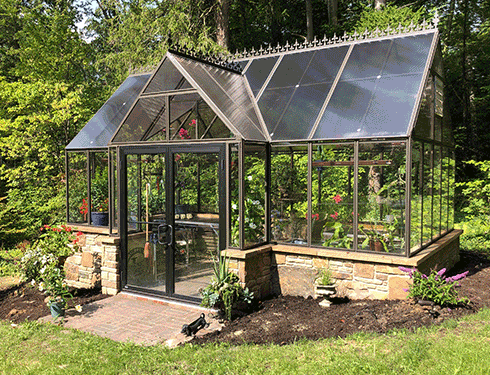Greenhouse Design: Developing an Eco-Friendly Growing Room
Discover just how to design a greenhouse that makes best use of natural light, conserves water, and includes renewable power sources. By choosing lasting products and applying energy-efficient home heating and cooling down systems, you can produce a greenhouse that is both ecologically conscious and effective.
Selecting Sustainable Products
When designing your green greenhouse, focus on sustainability by carefully selecting materials that are environmentally-friendly and promote energy efficiency. One of the most important aspects of creating a green greenhouse is choosing lasting materials. By selecting products that have a very little influence on the setting, you can reduce your carbon impact and add to a much more sustainable future.
Begin by thinking about the products utilized for the structure of your greenhouse. In addition, take into consideration utilizing materials that have a high thermal mass, such as rock or concrete, as they can help manage the temperature inside the greenhouse, lowering the requirement for excessive home heating or air conditioning.
Another crucial element to take into consideration is the glazing material for your greenhouse. Pick materials that offer superb insulation residential or commercial properties, such as dual- or triple-pane glass or polycarbonate panels. These products can aid trap warm inside the greenhouse, minimizing the amount of power needed for home heating during colder months.
Additionally, when picking materials for the inside of your greenhouse, go with sustainable alternatives such as bamboo or reclaimed wood for shelving and benches. These materials are not just durable however additionally promote the accountable usage of resources.
Taking Full Advantage Of All-natural Light
To optimize all-natural light in your environmentally friendly greenhouse, focus on the strategic placement of skylights and windows to optimize sunshine exposure throughout the day. This is an important consider creating an optimal growing setting for your plants. When picking the positioning of home windows, consider the path of the sun throughout the day and just how it will certainly affect the different locations of your greenhouse. South-facing home windows will certainly obtain one of the most sunshine, while east-facing windows will certainly record the early morning sunlight and west-facing home windows will certainly obtain the afternoon sun. By tactically putting windows on these sides, you can make sure a regular and also circulation of sunlight throughout the day.
They enable sunlight to get in from above, supplying an additional resource of light for useful link your plants. When setting up skylights, consider their size and position (Monarch Greenhouse builder Utah).
Carrying Out Energy-Efficient Heating and Air Conditioning Systems
To better enhance the power efficiency of your eco-friendly greenhouse, take into consideration executing energy-efficient home heating and cooling systems. These systems play a crucial role in preserving optimum temperature and moisture levels for your plants, while decreasing energy usage and lowering your greenhouse's carbon footprint.

This permits for the exchange of fresh air and aids control the temperature level inside the greenhouse. These systems use less energy contrasted to conventional air conditioning systems and can successfully reduce the temperature inside the greenhouse.
Water Preservation Strategies
To additionally enhance the energy effectiveness of your environmentally friendly greenhouse and continue lowering its environmental impact, it is essential to carry out efficient water preservation methods. Water is a precious source, and with the best strategies, you can minimize your greenhouse's water consumption while still giving ideal problems for your plants.
One means to save water is by making use of a drip irrigation system. Furthermore, mounting a rainwater harvesting system can assist capture and save rain for later usage in your greenhouse.
Another technique is to mulch your plants. Adding a layer of natural product around the base of your plants helps preserve wetness in the soil, lowering the requirement for constant watering. Additionally, take into consideration using a water-efficient potting mix that maintains moisture while still supplying ample drain.
Finally, check your greenhouse's water usage frequently. By keeping an eye on just how much water you are using, you can determine areas for improvement and make needed changes.
Incorporating Renewable Resource Sources

Final Thought
Finally, by executing honda push mower sustainable materials, making the most of natural light, utilizing energy-efficient home heating and cooling down systems, exercising water preservation techniques, and incorporating sustainable energy resources, you can develop an environmentally friendly greenhouse style. This will not just profit the atmosphere yet also promote sustainable and healthy plant growth. So, go ahead and make a positive effect on the world by creating an environment-friendly growing room.
When making your eco-friendly greenhouse, prioritize sustainability by carefully picking products that are environmentally-friendly and advertise power performance. These products can assist trap warmth inside the greenhouse, lowering the quantity of energy needed for heating during chillier months.
These systems use less power compared to conventional air conditioning units and can effectively decrease the temperature level inside the greenhouse.
You can incorporate renewable energy sources into your greenhouse design to make it a lot more green and lasting.In conclusion, by implementing lasting products, maximizing natural light, using energy-efficient heating and cooling systems, practicing water conservation techniques, and incorporating eco-friendly power resources, you can produce an environment-friendly greenhouse style.